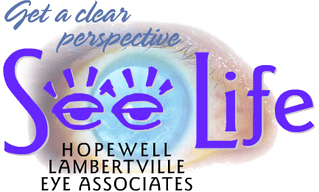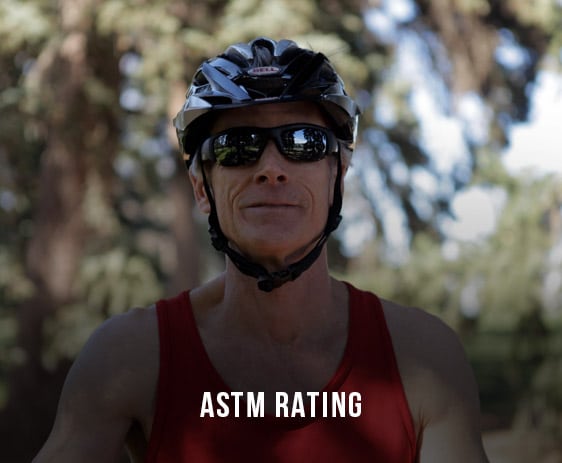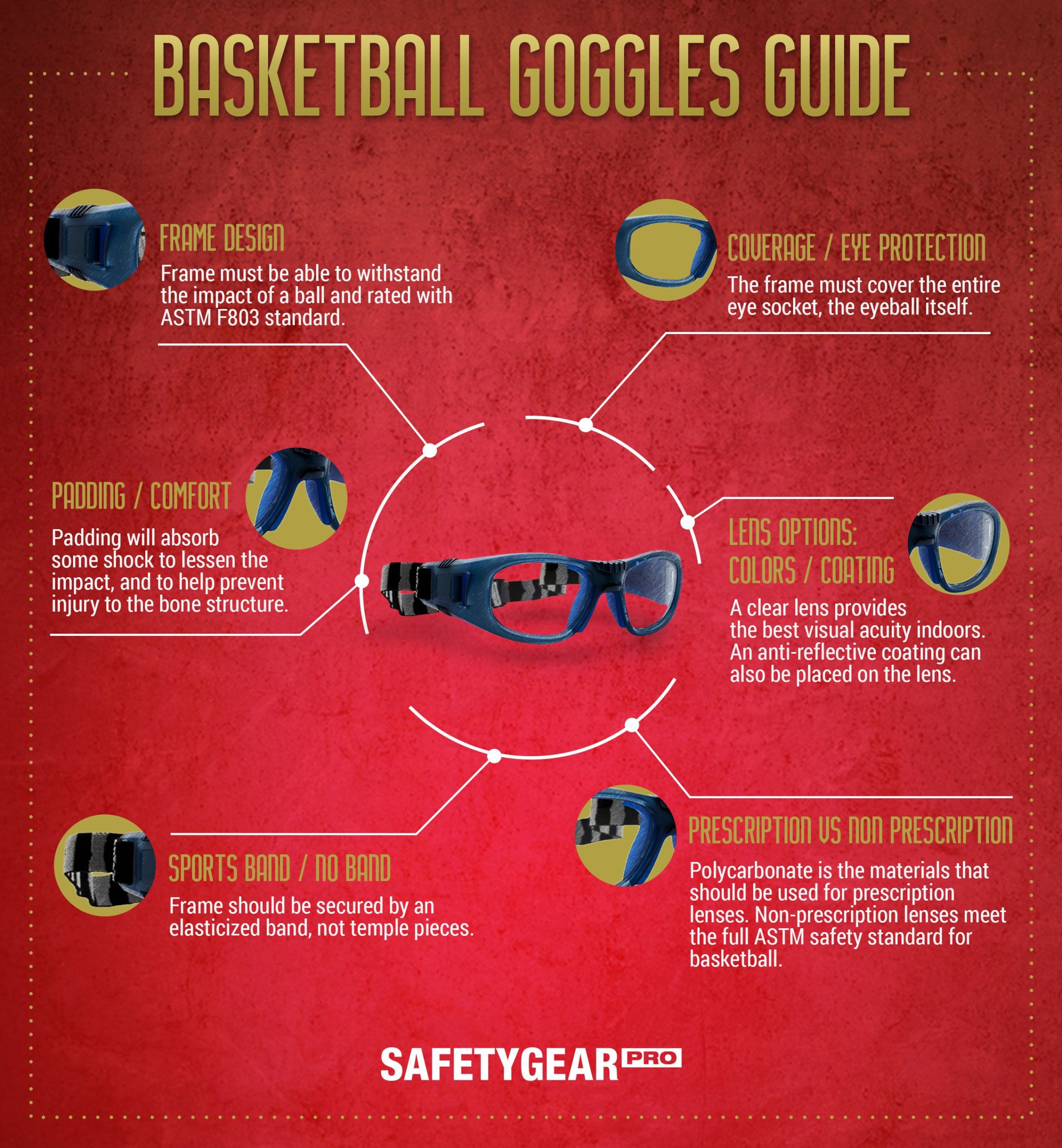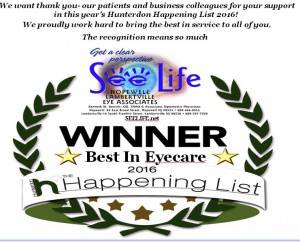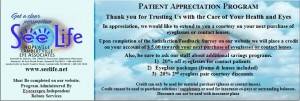Keep your eyes on the game and safe from injury with sports safety glasses.
Now that we have officially entered the month of March, some of the most exciting (and competitive) few weeks of sporting competition are about to kick off, leaving just one accomplished winner crowned at the end of it all. We are, of course, talking about March Madness.
In anticipation of the upcoming NCAA Men’s and Women’s Basketball Championship tournaments, Hopewell Lambertville Eye and Prevent Blindness America is urging players to keep their eyes healthy by wearing the proper eye protection. According to the national non-profit, eye health and safety organization, basketball is the leading cause of sports-related eye injuries among those ages 15 and older
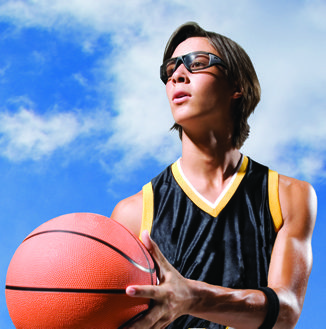
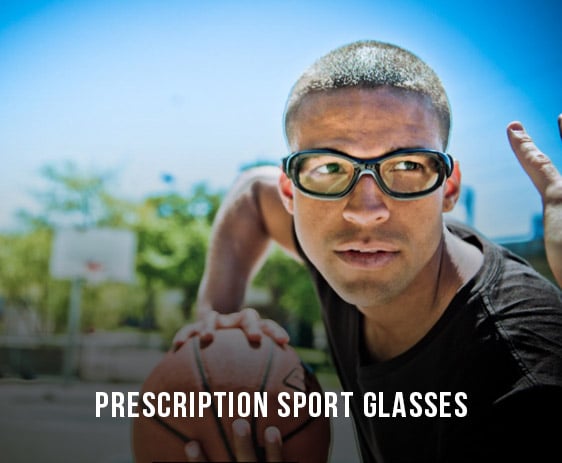

The Importance Of Sports Eye Safety
According to the American Academy of Ophthalmology, more than 40% of eye injuries every year are related to sports or recreational activities. Among all of the eye injuries that were reported, only 5.3% of those who were injured said that they had been wearing safety or sports glasses at the time of their injury.¹
In addition, The Coalition to Prevent Sports Eye Injuries reports that one in 10 college basketball players suffer an eye injury each season. Eye injuries can include corneal abrasions, blunt trauma and penetrating injuries, inflamed iris, fracture of the eye socket, swollen or detached retinas, traumatic cataract and blood spilling into the eye’s anterior chamber. Some eye injuries may be serious enough to cause permanent vision loss.

What is an eye injury?
“An eye injury can happen in a split-second, but the effects can last a lifetime,” said Hugh R. Parry, president and CEO of Prevent Blindness America. “We want to advise all those playing any sport anywhere to make sure that eye protection is always part of the uniform.”
- Eye injuries may be of different types: closed globe injuries (blow or contusion caused by a blunt object) or penetrating injuries (caused by a perforating object). Chemical products may also cause them when in contact with the eyes.
- Eye contusions may lead to cataracts, glaucoma, inflammations, haemorrhages, and retinal or choroid tears or ruptures. In up to 5% of the cases, an eye contusion causes a retinal detachment.
- In case of perforations, there is a risk of infection, as a foreign body may remain inside the eye, thus leading to a worse prognosis. In most severe cases, the eyeball integrity may be endangered.
- Treatments are various and go from the use of eye drops in small corneal erosions or scratches, to complex surgical interventions in the most severe eye perforation cases.
- The most common causes of eye injuries are work accidents, home accidents (up to a 50%), traffic accidents, assaults and accidents from sport practice.
Unfortunately, as fun and exhilarating as sports can be, they have the potential to be just as dangerous to your eyes. Sports related eye injuries occur frequently in all different sports (as well as on the job) , but especially in basketball, water sports, baseball and softball for younger individuals while older individuals (workplace, gardening and lawn care, and sport).
However, wearing helmets or regular glasses are not enough to provide full protection. The simplest and most effective way that you can protect yourself from sports eye injuries is by wearing protective glasses.
Wearing the proper eye protection can prevent most eye injuries. Prevent Blindness America provides the following tips on how to purchase the right kind of eye protection for all athletes:
-
- If you wear prescription glasses, ask your eye doctor at Hopewell Lambertville Eye to fit you for prescription eye protection.
-
- Check the packaging to see if the eye protector you select has been tested for sports use. Also check to see that the eye protector is made of polycarbonate material. Polycarbonate eye protectors are the most impact resistant. At Hopewell Lambertville Eye all safety eyewear meets the ASTM safety standards.
-
- In order to be assured that your eyes are protected, it is important that any eye guard or sports protective eyewear be labeled as ASTM F803 approved. This eyewear is performance tested to give you the highest levels of protection.
-
- Fogging of the lenses can be a problem when you’re active. Some eye protectors are available with anti-fog coating. Others have side vents for additional ventilation. Try on different types to determine which is most comfortable for you.
-
- Sports eye protectors should be padded or cushioned along the brow and bridge of the nose. Padding will prevent the eye protectors from cutting your skin.
-
- Try on the eye protector to determine if it’s the right size. Adjust the strap and make sure it’s not too tight or too loose. If you purchased your eye protectors at an optical store, an optical representative can help you adjust the eye protector for a comfortable fit.
Eye Safety Options For Athletes
A Basketball Goggles Buyer’s Guide
According to the American Optometric Association, basketball is the leading cause of eye injuries in individuals between the ages of 15 and 24. While 1 in 18 college athletes will sustain an eye injury, the average rate of injury for basketball players is 1 one 10. Recreational, competitive or professional players should wear safety sport glasses. This example guide for basketball which will point you toward eyewear that is designed for the unique physical demands of navigating the basketball court and shooting baskets.
Each and every sport has its own recommended sports eye protectors that have been recommended and approved by the American Society for Testing and Materials.
ASTM Rating
Proper sport safety eyewear must meet or exceed stringent ASTM international safety standards for impact resistance. The frame and lenses are each tested for effectiveness in preventing eye injuries and are approved for kids who participate in a wide range of sports, including lacrosse, basketball, baseball, and soccer.
For non prescription and prescriptive recommendations on safety sport and occupational safety eyewear and / or contact lens alternatives - ask the doctors at Hopewell Lambertville Eye
Also, if you are an athlete that wears prescription lenses, you may want to consider a more convenient, less intrusive option if you are planning on participating in physical activity regularly. For example, Contacts Lens or LASIK eye surgery is a great option for athletes, as you no longer have to worry about having to balance prescription lenses with protective eyewear. There are also sport specific contact lenses such as the Altius Sport Contact Lens available at Hopewell Lambertville Eye.
When it comes to intense sporting competition and taking guesses, especially when if it’s taking place on the basketball court, on the football field, or any other physical environment, it’s important to protect your vision from the physicality of sports and workplace so you can keep your eyes on the game and wear safety eyewear to prevent injury and enhance performance. You should never guess or take your chances when it comes to your long-term vision health and safety.
For more information on sports eye injury prevention and information on sport-specific eye protection recommendations, please Hopewell Lambertville Eye Associates: www.seelife.net
Hopewell 609-466-0055 Lambertville 609-397-7020
preventblindness.org/sports-eye-safety.
=======================================================================================Why the Need for Safety Eyewear : Ask the Pros
These 12 iconic NBA players are known for their goggles, facemasks, and protective eyewear
2022/04/01 7:32 am by stuartViews: 10591

From pre-game fashions to on-court styles to what shoes they’re wearing in-game, the NBA isn’t just the most-visible and most well-known basketball league, but the NBA also has cultural influence on and off-the-court. The NBA is definitely the most-stylish league of the four major professional sports leagues, but one on-court styling that won’t ever become cool are basketball goggles.
We’re not talking about players that put on goggles for a short period of time after being poked in the eye, but players that wore googles, sport spectacles or protective face masks even when they no longer had to. So much so that these players have become known for their eyewear than without. And we’re not talking about players wearing goggles when celebrating a championship (to protect their eyes from the alcohol), this is a list of players where their protective eyewear are part of their signature style.
11. Hakeem Olajuwon We know Hakeem mostly without goggles, but in 1993, Hakeem sustained a fractured right orbit stemming from an elbow in the face from Bill Cartwright. Olajuwon had to sit out almost two months and when he returned he was wearing goggles.
10. Wendall Carter Jr. The only current player that sports sports goggles in today’s NBA so we had to mention him. Carter plays for the lowly Orlando Magic, so you might not be aware that the former Duke product wears the glasses every game. Wendall’s glasses didn’t get much attention not until LeBron James picked them up during the game and put them on.
9. Buck Williams: Buck Williams didn’t play with goggles for much of his career until he elbowed by the Dallas Mavericks’ James Donaldson in the 1990 NBA Playoffs. From there, the blue-collar Portland Trailblazer forward would only take the goggles off to shoot free-throws during the next eight years of his career.
8. Antoine Carr spent over a decade in the league without goggles. The “Big Dwag” only started to wear his signature protective sunglasses after he suffered a lacerated eyeball when he played alongside the Karl Malone-John Stockton Utah Jazz. Even though he wore those sunglasses for a few more seasons, Carr’s unique eyewear was certainly a new take on the usual basketball goggles.
7. Bo Outlaw Charles “Bo” Outlaw wore some Oakley-styled glasses and became synonymous with the high energy role player.
6. Thurl Bailey: Bailey played in the golden era of the sports goggles. Coming out of North Carolina State under the late great Head Coach Jim Valvano, Bailey wore goggles during his entire playing professional basketball – the vast majority of which was spent with the Utah Jazz before playing for the Minnesota Timberwolves for a couple seasons.
5. Kurt Rambis Probably the most infamous on the list, Rambis’ were less goggles but thick-rimmed glasses with a lanyard making for a very uncool look.
4. Rip Hamilton Not goggles or glasses, but Richard Hamilton went the full Monty by wearing a protective face shield game in and game out. Hard to believe that it was comfortable but after Rip broke his nose thrice in two seasons, he started wearing the face mask — which became a signature look — the rest of his career.
3. Horace Grant While most every other player that ends up wearing protective eye wear does so because of an in-game injury, Horace Grant started wearing his prescription goggles becase he got Laskik eye surgery after divulging that he was “legally blind.”
Horace Grant: I got them because I was legally blind. I wore ’em because of that for a few years. After a few years I got Lasik surgery, but I kept wearing them without the prescription lenses because I had grandparents and parents come up to me and thank me for wearing them. Their kids and grandkids would get made fun of by wearing protective eyewear playing sports, so I kept wearing them to help make it cool to wear goggles for the kids.
2. James Worthy Lots of Los Angeles Lakers on this list, right? Not sure what was in the water in LA, but James Worthy started wearing goggles after suffering a scratched cornea during a game in 1985. Worthy would never take them off and ended up wearing goggles the majority of their career.
1. Kareem Abdul-Jabbar is the player that comes to mind when you talk about NBA players wearing goggles. Playing 20 seasons in the NBA, Kareem started wearing goggles after being poked in the eye during a game in 1975. That’s six years after getting into the league meaning that Abdul-Jabbar wore goggles for 14 seasons.
https://www.interbasket.net/news/nba-players-are-known-for-goggles-facemasks-glasses/34321/
References:
https://www.ncbi.nlm.nih.gov/pmc/articles/PMC6954083/
https://safetygearpro.com/a-basketball-goggles-buyers-guide/srdbtuoa/
